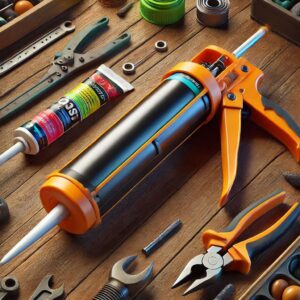Simple DIY Winterization
As home improvement specialists who install energy efficient replacement windows in Kansas City, we are frequently about insulation and some energy efficient techniques to winterize your home. So here is a list of energy efficient things you can do yourself.
From simple sealing to weather stripping, programable thermostats, storm doors, and more.
Simple DIY Winterization for Homeowners
As winter approaches, it’s essential for homeowners to prepare their homes for the colder months ahead. Proper winterization can help you save on energy bills, protect your property, and ensure your home remains comfortable throughout the season. Here are some simple DIY tips to winterize your home effectively:
- Seal Gaps and Cracks
- Weatherstripping: Apply weatherstripping around doors and windows to prevent drafts. This helps keep warm air inside and cold air out.
- Caulking: Use caulk to seal any gaps or cracks around windows, doors, and exterior walls. This is an effective way to prevent heat loss.

- Sealing: Use caulk or expanding foam to seal fixtures and outlets that penetrate walls or ceilings.
- Insulate Your Home
- Attic Insulation: Check your attic insulation and add more if necessary. Proper insulation helps retain heat and reduces energy costs.
- Pipe Insulation: Wrap exposed pipes with foam insulation to prevent freezing and bursting. This is particularly important in unheated areas like basements, crawl spaces, and garages.
- Maintain Your Heating System
- Furnace Check-Up: Schedule a professional inspection of your furnace or heating system to ensure it’s running efficiently. Replace filters regularly to improve airflow and efficiency.
- Bleed Radiators: If you have a hot water heating system, bleed the radiators to remove any trapped air, ensuring they heat evenly.
- Protect Outdoor Fixtures
- Garden Hoses: Disconnect and drain garden hoses, and store them indoors to prevent them from freezing and cracking.
- Sprinkler System: Blow out your sprinkler system to remove any remaining water. This helps prevent damage from frozen pipes.
- Reverse Ceiling Fans
- Fan Direction: Set your ceiling fans to rotate clockwise during the winter. This creates an updraft that helps circulate warm air trapped near the ceiling back down into the living space.
- Check the Roof and Gutters
- Gutter Cleaning: Clear leaves and debris from gutters to prevent ice dams. Ice dams can cause water to back up and seep into your home.
- Roof Inspection: Check for missing or damaged shingles and repair them to prevent leaks during snow and ice accumulation.
- Install Storm Windows and Doors
- Storm Windows: If you have storm windows, install them to provide an extra layer of insulation. They can significantly reduce heat loss.

- Storm Doors: Adding a storm door can help keep drafts out and reduce heat loss through your main entry doors.
- Energy efficient replacement windows are designed to reduce the amount of heat transfer, helping maintain a comfortable temperature inside your home while reducing energy costs.
- Use Draft Stoppers
- Draft Snakes: Place draft stoppers or “draft snakes” at the base of exterior doors to block cold air from entering. They are an inexpensive and easy way to improve comfort.
- Set Your Thermostat Wisely
- Programmable Thermostat: Install a programmable
 thermostat to automatically lower the temperature when you’re asleep or away. This can lead to significant energy savings.
thermostat to automatically lower the temperature when you’re asleep or away. This can lead to significant energy savings.
By taking these simple DIY steps to winterize your home, you can enhance comfort, reduce energy costs, and protect your property from the harsh winter weather. A little preparation goes a long way in ensuring a cozy and worry-free winter season.
